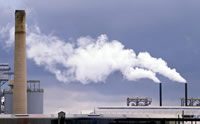More SPCC Q&As
In terms of SPCC regulations, are there any broader or stricter views of the definition, for example, of navigable waterway? The definition of “navigable waterways” has not been expressly addressed in the new rule revisions. EPA has always held a very broad definition of what navigable waterways meant. I’ve seen very few facilities that could […]

